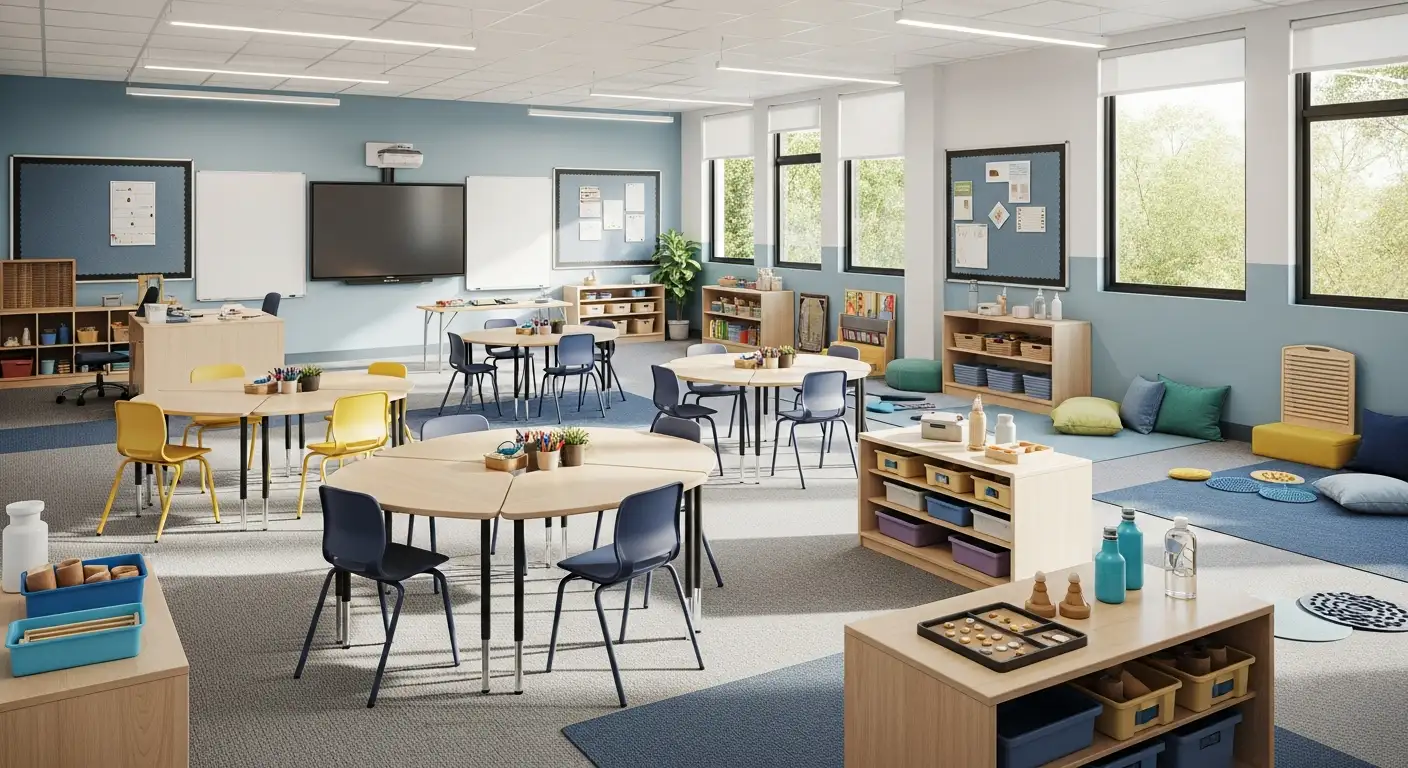Building Blocks of Social Success
Developing appropriate peer interaction skills is essential for children's social and emotional growth. From early childhood through adolescence, fostering positive peer relationships helps children learn vital social skills, build friendships, and develop a sense of belonging. Innovative strategies and practical activities can significantly support educators and caregivers in guiding children toward healthy and supportive peer interactions.
The Importance of Peer Relationships for Child Development
Why are peer relationships important for children's development?
Peer relationships are fundamental for children’s overall growth in social, emotional, and cognitive areas. Engaging with peers provides opportunities to learn and practice social skills like cooperation, empathy, conflict resolution, and effective communication. Through these interactions, children begin to build friendships, which foster a sense of belonging and boost their self-esteem.
Developing positive peer relationships is linked to healthier emotional regulation and improved mental health. Children who experience acceptance and positive social exchanges tend to develop greater resilience and are better equipped to handle stress and emotional challenges.
Research indicates that early experiences with peers set the stage for future social competence, academic achievement, and psychological well-being. Conversely, difficulties in forming or maintaining friendships—such as peer rejection—can lead to internal struggles like anxiety or depression.
Peer interactions are also integral to identity development, particularly during adolescence. They help young people explore social roles, build their self-concept, and achieve a sense of independence.
In summary, healthy peer relationships support children's social adaptation, happiness, and their capacity to navigate complex social situations throughout life, forming a crucial foundation for lifelong well-being.
Activities and Strategies to Promote Healthy Peer Interactions
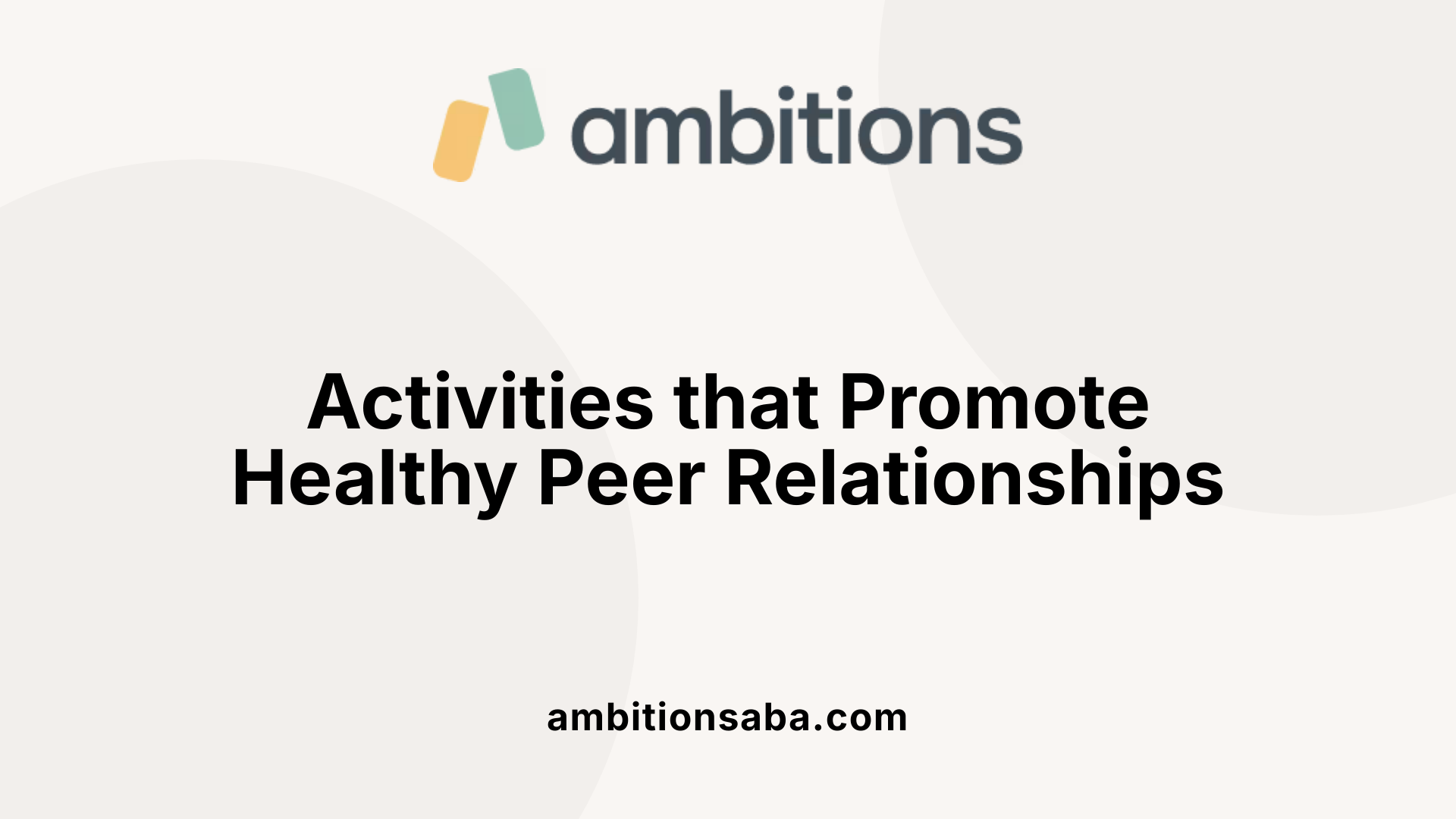
What activities can help develop healthy peer relationships among children?
Fostering strong peer relationships in early childhood requires engaging in various interactive and inclusive activities.
One effective approach involves cooperative games and collaborative projects. These activities promote sharing, turn-taking, and empathy development. For instance, children can work together on art projects or group puzzles, learning to cooperate and appreciate each other's contributions.
Structured social skills exercises, such as role-playing and emotion charades, help children recognize and interpret emotions while practicing appropriate responses. Activities like 'Name Games' and pretend play also encourage communication, imagination, and understanding of social roles.
In addition, inclusive group activities and themed discussions create opportunities for children to explore common interests and respect differences. Programs like the 'Making Friends Program' or family-involved literacy events strengthen bonds and reinforce social skills outside the classroom.
Community-based activities such as team sports, gardening, and group challenges foster teamwork, responsibility, and trust. These shared endeavors help children learn to work together towards common goals, building a sense of belonging and mutual respect.
In summary, a variety of playful, collaborative, and community-oriented activities contribute significantly to developing healthy peer relationships among young children.
Creating a Supportive Classroom Environment for Peer Interaction
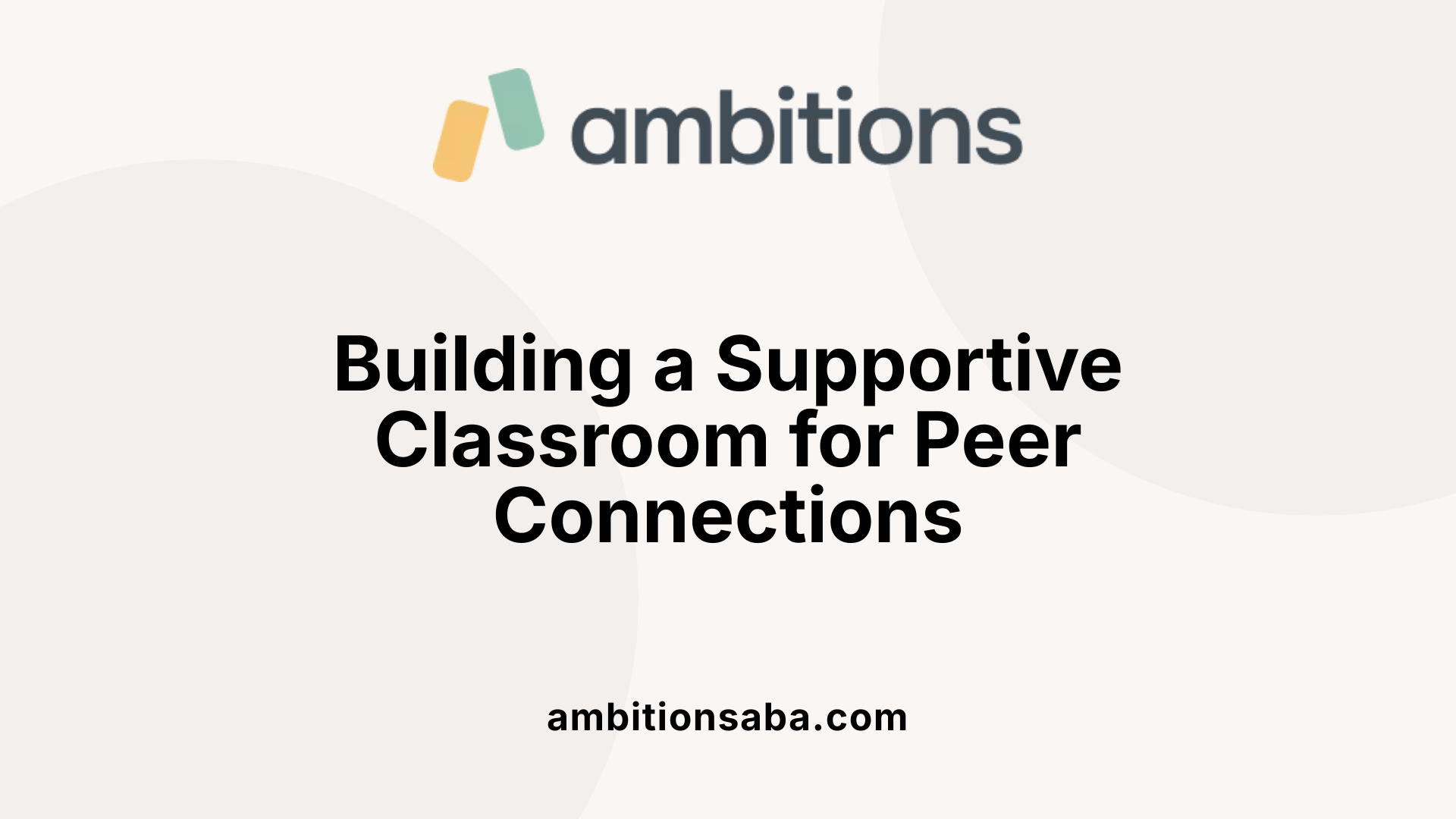
How can educators promote positive and supportive peer relationships in educational settings?
Promoting positive peer relationships starts with intentional planning and classroom management strategies. Teachers can create engaging opportunities for students to socialize and collaborate through a variety of activities. Group projects, cooperative games, and pair work foster teamwork, inclusion, and mutual respect.
Modeling respectful behavior is crucial. Teachers can demonstrate polite communication, sharing, and listening, setting a standard for students to follow. Role-playing social situations allows children to practice appropriate responses in a safe environment. Explicitly teaching social skills, such as how to ask for help or give compliments, further enhances peer interactions.
Incorporating fun 'getting to know you' games, like bingo or interviews, helps students learn about each other's interests and develop familiarity. Classroom decorations, like posters and student-created projects, promote a warm, inclusive atmosphere while serving as visual cues for expected behaviors.
Shared creative projects, such as making T-shirt designs or shoebox self-portraits, encourage students to work together and express their identities. These activities not only foster friendship but also build a sense of community.
Using visual aids and prompts near play areas or common spaces can remind students of social rules and encourage positive engagement. For example, posters illustrating ways to get a friend's attention or cues for sharing can guide behavior naturally.
Overall, a classroom environment that supports social skill development, emphasizes kindness, and celebrates diversity lays the foundation for strong, supportive peer relationships. When students feel connected and included, they are more likely to develop lasting friendships and demonstrate empathy towards others.
Guiding Children to Interact Positively
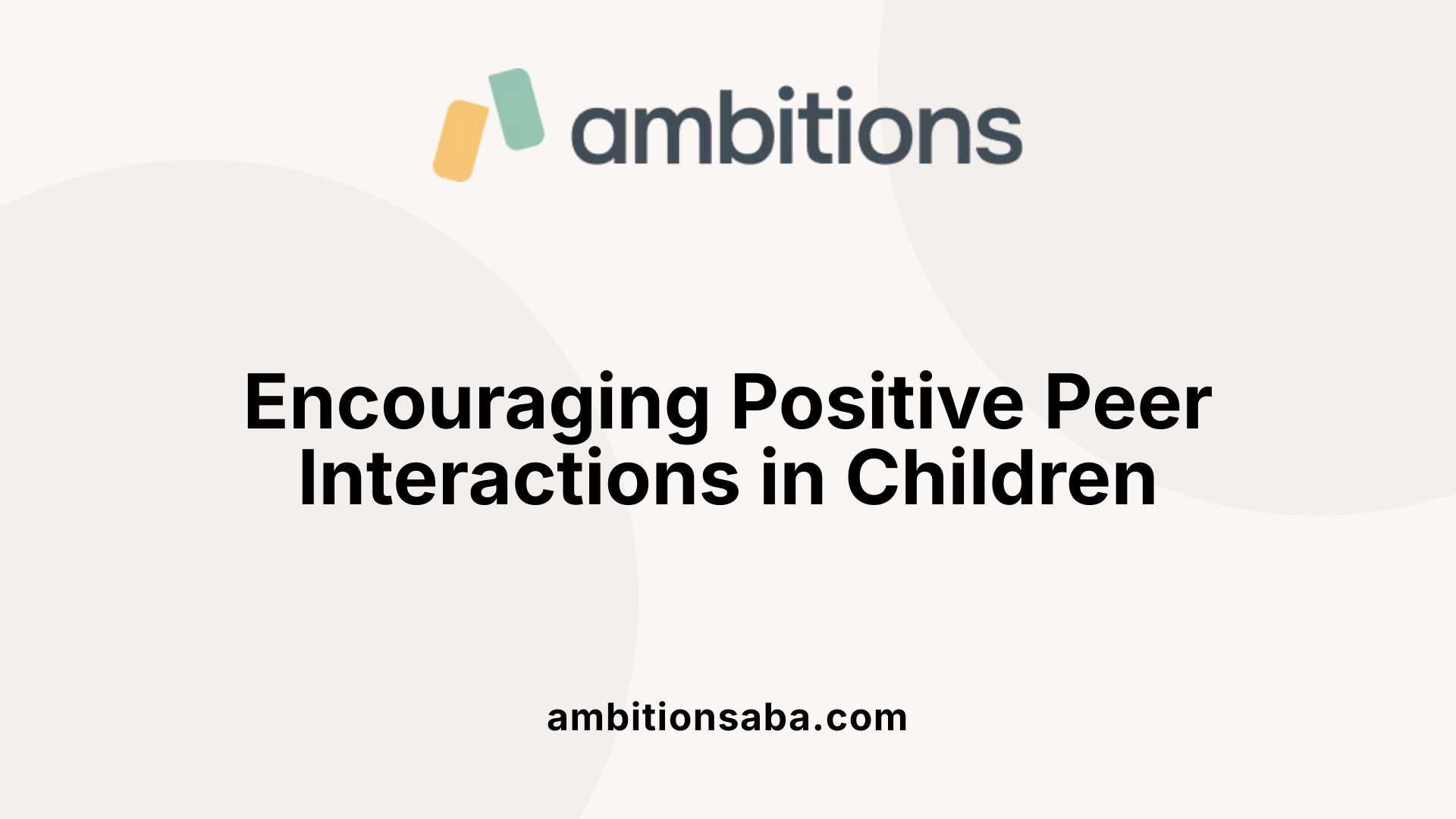
How can adults encourage children to interact positively with their peers?
Adults play a vital role in fostering positive peer interactions by demonstrating appropriate social behaviors. For example, they can model sharing, taking turns, listening actively, and using kind words. Such modeling provides children with clear examples of respectful and friendly actions.
Structured play and group activities are effective in creating opportunities for children to practice social skills. Activities like role-play scenarios, partner games, and collaborative projects help children learn how to communicate, share ideas, and resolve conflicts.
Using prompts to initiate interactions can also encourage children to engage with their peers. Teachers might prompt children to greet each other, recognize kindness, or join in activities. Recognizing and praising acts of kindness reinforces these behaviors and promotes a friendly classroom climate.
Teaching communication strategies, such as active listening and ‘I’ messages, supports children in expressing their feelings and responding appropriately. For instance, encouraging children to say, “I feel happy when you share your toy,” helps develop empathy and understanding.
Through consistent modeling, structured activities, prompts, and reinforcement, adults can significantly enhance children's ability to build friendships and navigate social interactions confidently and kindly.
Teaching Techniques for Effective Peer Interaction Education
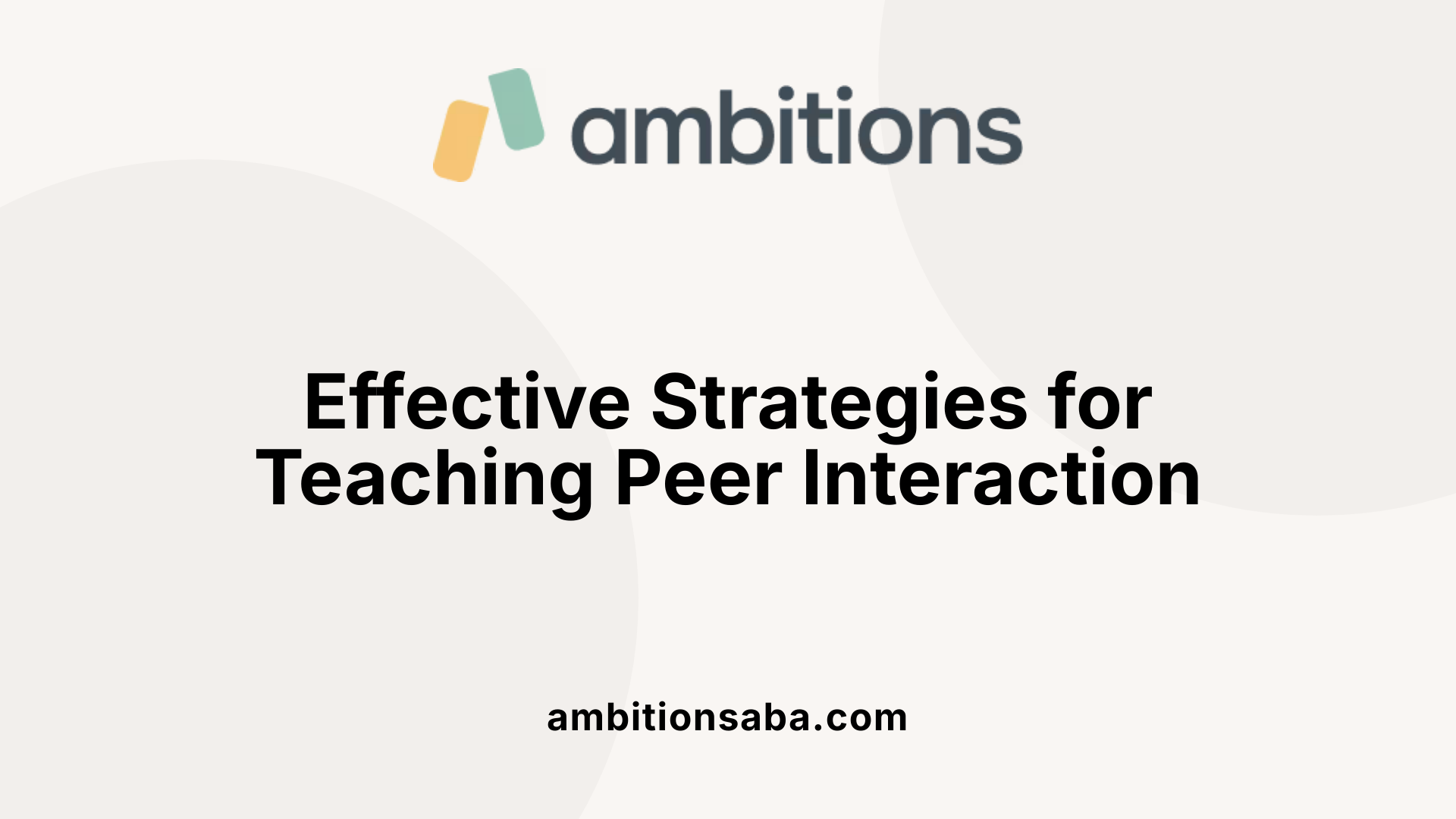
What are some effective strategies for teaching children appropriate peer interaction?
Teaching children how to interact positively with peers involves multiple methods designed to make social skills accessible and engaging. One foundational approach is explicitly teaching social skills using structured activities. This includes demonstrating behaviors through modeling, providing clear reinforcement when appropriate behaviors occur, and using social stories that describe social situations from the child's perspective. These stories help set expectations, reduce anxiety, and guide behavior.
Visual aids like videos and comic strip conversations are powerful tools to support learning. Video modeling allows children to observe social interactions, analyze behaviors, and then imitate these actions during practice. Comics use drawings and symbols to illustrate conversations and social cues, helping children interpret complex social signals.
Prompting techniques are also effective for encouraging positive behavior. Teachers can provide verbal cues or use gestures that prime children to respond appropriately. Immediate praise and reinforcement, such as stickers, praise words, or tokens like Superstars necklaces, help solidify learned behaviors and motivate ongoing effort.
Structured opportunities for practice are essential. Activities like group art projects, classroom errands, ‘getting to know you’ bingo, and partner games like clap or yoga enhance peer engagement. These settings foster communication, cooperation, and sharing of interests.
Adapting these techniques to fit individual development levels and cultural backgrounds increases their effectiveness. For younger children or those with special needs, visual prompts and simplified social stories work well. In diverse classrooms, incorporating bilingual materials or culturally relevant scenarios helps ensure all children can participate meaningfully.
Consistent instruction during small grouped times, combined with reinforcement during free play and classroom routines, creates a learning environment where social skills can develop naturally over time. As children become more confident, these skills translate into stronger friendships, greater acceptance, and fewer behavioral issues, supporting overall social and emotional growth.
Supporting Social Growth for Lifelong Success
Teaching appropriate peer interaction is a continuous process that requires intentional planning, modeling, and reinforcement. Combining evidence-based approaches, engaging activities, and a nurturing environment fosters children's social skills and encourages positive peer relationships. Involving families, adapting strategies to diverse needs, and embedding social skills into daily routines help children develop both their social competence and emotional resilience. When executed effectively, these efforts set a foundation for lifelong friendships, academic achievement, and emotional well-being, supporting children’s overall growth and success.
References
- Teaching Positive Peer Interaction Skills - Watson Institute
- [PDF] Handout 4: Tips for Promoting Positive Peer-to-Peer Relationships
- 10 Ways to Encourage Positive Peer Relationships - Brookes Blog
- Promoting Positive Peer Social Interactions
- A Guide to Supporting Peer Interaction for Students who Use AAC
- Teacher Tips: Fostering Peer Relationships - Teachstone
- Peer Relationships - ECE Resource Hub
- [PDF] Promoting Peer Interactions | ibestt


